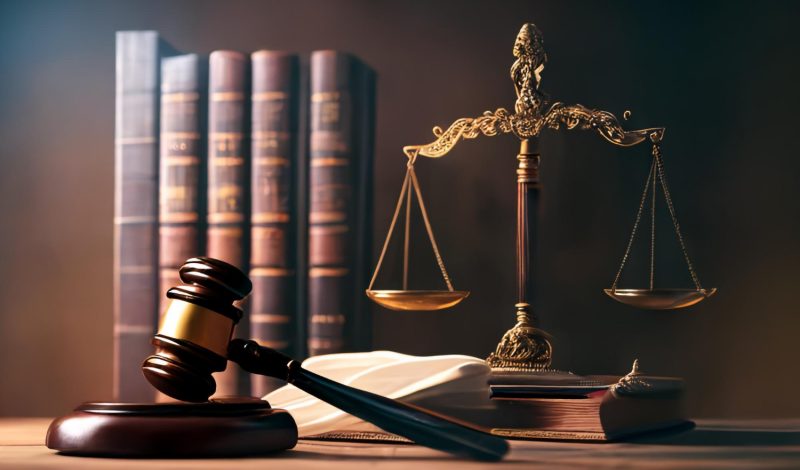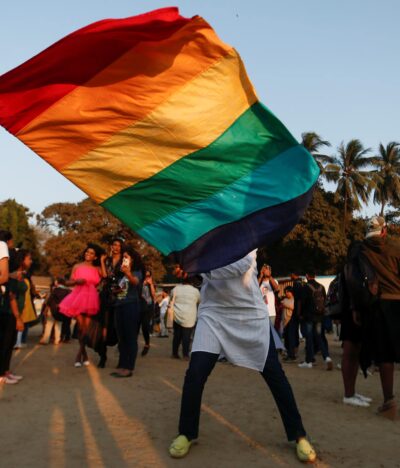DR. JAYKUMAR BHONGALE
Assistant Professor and Research coordinator of Bharati Vidyapeeth Deemed to be University, New Law College, Pune.
MR. OISHIK BHATTACHARYA
Student of BBA LLB SEM VII, Bharati Vidyapeeth, Deemed to be University, New Law College.
ABSTRACT: Human Rights don’t get extinguished ever but achieves its importance through the socio-economic, political and cultural situations taking place in a society. Right to Safe and a Healthy Environment is a right which is not mentioned expressly in the Constitution of India, even though it is a rising factor when pollution, exclusively air pollution is at its peak. Since the Constitution was silent on this aspect, the judiciary got a wide scope to have a creative hat by making new laws on the basic structure, there forth changing the constitutional understandings over the period of time. Article 21, Article 48 A and Article 51 A(g) of the Constitution under which Right to Life and right to Personal Liberty can be interpreted has been subjected to constant interpretative battles in the court to create a strong bridge between right to a safe and a healthy environment and personal liberties. Under the umbrella of Article 21, environmental rights have been fighting to secure its position against pollution and public interest litigation has been playing an integral role to safeguard it. Therefore, the silence in the Indian Constitution in regards to Right to live in a Healthy Environment has turned out to be a
blessing in disguise since the judiciary could uphold the rule of law above the rule of Constitution and could be able to voice its opinions which are, indeed louder than unread texts. The author shall conduct a detailed study on the concerned articles of the Constitution, their evolution and the pressing issues, besides a thorough study of doctrines with referral illustrations. A wide study of relevant case laws shall be made, discussing all the dissenting opinions of relevant cases which haven’t been given importance to. An analysis of the work undertaken by the judiciary and the activities which ought to be undertaken in future shall be discussed. A link of all 3 organs shall be drawn as well for better understanding. Lastly, discussions shall be made on the present state and importance of art. 21 in the 21st century, while focusing on matters like PIL and reliefs to the victims.
INTRODUCTION
Environmental degradation is caused due to pollution and it negates the human rights which is the extension of Right to Life. Pollution is said to be the pollutants which contaminates the environment which disturbs the smooth functioning of the environment. There is 4 kinds of pollution which are water, soil, light, radioactive, heat and air. Urbanization as well as industrialization along with population growth are the main reason for pollutions. Along with these is also dumping waste which is mainly solid, industrial waste, burning of fossil fuel and the increase of vehicles on road. India has faced many severe problems due to pollution mainly the air pollution. It has also been declared by WHO that few cities in India are very dangerous to reside and is termed as death traps. Also statistics show that many people in India live in localities which have pollution above the safety
standards. On an average an Indian is set to lose three years of their live due to the prevailing pollution according to a research by Economic Times. According to research by Yale University, India is ranked as bottom performer with respect to health, air, water and sanitation. Due to contamination in food and water there is a surge in uncurable diseases. Indian rivers like Ganga and Yamuna are rated as one of the most polluted rivers. A city in Odisha named Sukinda is named one of the severe envionmentally degraded area across the globe. Dumping of garbage, toxic city air and the increased noise pollution due to vehicles are very common in India. It has now become a threat to the life of people. Justice C G Weeremantry’s sayings in the Hungary v Slovakia case says that environmental damage can hamper and undermine the rights of human. In India it has now become a nationwide concern which requires immediate legal action and protection, a nation which has committed to many environmental convection.
RESEARCH OBJECTIVES
In the context of the topic, the objective of the paper is as follows:
- To identify whether the right to a safe and a healthy environment is securely safeguarded by the Indian Constitution even when the law is not expressly mentioned in the text and is covered under the ambit of Article 21 of the Indian Constitution.
- To identify the root causes of air pollution and the laws in control of the same.
- To study the role of judiciary in protecting the Right of every citizen to live in a healthy environment and breathe fresh air and how it has evolved over the years since the first constitution.
RESEARCH METHODOLOGY
To gain the objective of the paper as mentioned above, the said structure shall be followed:
Firstly, a deep analysis of the existing constitutional provisions of environmental rights against air pollution shall be made; followed by that, secondly, the methods and procedures undertaken in local and international spheres for voicing the constitutional silences shall be studied on; thirdly, an analysis of how Article 21 of the Constitution brings in the sphere of right to healthy environment shall be made; fourthly, a comparison between the first drafted constitution and the present amended constitution shall be done and fifthly, few ideas shall be discussed which could be implemented for protecting one’s Right against pollution with the help of judiciary.
A qualitative approach has been undertaken in analyzing the paper and for that purpose, books, online materials and newspapers were utilized to source the materials and critically examine the research of the battle between air pollution v. Right to live in a healthy and safe environment.
RESEARCH QUESTIONS
The questions to be addressed in this particular research article are as follows:
- Whether the judiciary has taken adequate steps for protecting one’s Right
against pollution which could be covered under article 21?
- Whether the existing constitutional provisions of environmental rights against air pollution suffice or we require a modified, specific law for the same?
- Whether any advanced mechanism can be issued through which air pollution can be controlled better?
STATEMENT OF RESEARCH PROBLEM
Amongst the leading countries which have faced severe impacts of air pollution, India stands at the premium. A study of WHO1 reveals that a few cities in India is declared as death traps of air pollution and that over 50% of India’s population resides in areas which doesn’t even meet the basic safety standards. A research conducted by Economic Times by environmental economists from Chicago and Harvard has stated that Indians tend to lose 3 years of their lives due to adverse air conditions and highly excessive levels of pollutants.2
Thereforth, it is obvious from the stated that the air in Indian cities is among the worst in the world and is threatening enough to take lives.
Further, a 2014 research by researchers at Yale University has concluded that India falls under the ‘bottom performers’ on several factors of adverse health impact, air quality, water and sanitation. Besides,
1 “Air pollution killed over 1 lakh children in a year in India: WHO’, (30 October 2018) The Economic Times, available at – https://economictimes.indiatimes.com /news/politics- andnation/air-pollution-killed-over-1-lakh-children-in-a-year-in-india- (last accessed 19 December 2018).”
2 ibid
contaminated water and unhygienic food adds to the spread of incurable diseases. Therefore, pollution in India has reached the apex and stands as a great threat to the very existence of human life.3
In this context, it was first observed in the International Court of Justice that damage to the environment is powerful enough to affect all kinds of human rights. In India, this particular matter has become a great source of concern and needs immediate legal attention. India has pledged to many of the international conventions dealing with environmental issues but still lacks a clean environment. In this regard, this is the statement of problem at this juncture which has to be taken care of, more since the law does not expressly lie down its guidelines.
SIGNIFICANCE OF THE STUDY
It is heart breakening to observe how the global interest at present is not about exorbitant developments but has completely shifted towards balancing air pollution and the Right to a Healthy Environment. It is a cry both at local and international spheres for the protection of their basic fundamental rights. Human Rights and environment are co connected deeply; they support and help each other grow even at crucial stages. Mother Nature is linked to every human being and for the prospection of such; the environment needs to be clean so that people have their rights secured and intact. There forth, discussion of this topic is of utmost importance if not the most important at this juncture of global concerns.
3 Harm to individuals suffered as a result of environmentally damaging activities – M Hall, “Environmental Victims: Challenges for Criminology and Victimology in the 21st Century”, Journal of Criminal Justice and Security, Vol 3 No. 4, 2012, pp. 371, available athttps://www.fvv.um.si/rv/arhiv/2011-4/02_hall.pdf (last accessed 18 December 2018)
SCOPE AND LIMITATIONS
The particular research article focuses in an Indian perspective and deals with the Indian constitution and its laws in regards to the deadly rising pollution of the country, especially in regards to air pollution. The scope widens to a study of all the landmark judgements as has been pronounced in the legal history. Further, it also deals with an in-depth study of the whole constitution in regards to the contemporary world.
However, the paper limits itself to an Indian perspective and doesn’t have a comparative analysis in depth. The methodology adopted is of a qualitative approach to pen this article.
CONSTITUTIONAL SAFEGUARDS OVER ENVIRONMENTAL RIGHTS AGAINST POLLUTION
The constitution is undoubtedly the most important part of the law hierarchy in India. It not only upholds the sovereignty, democracy and values of the society but also represents the legal system of India as a whole. The constitution is the custodian where people attain their rights from; be it human rights, cultural, social, economic or civil rights. However, environment has always been on the last priority of human rights as its two fold provision is found only under the DPSP, or the Directive principle of state policy.
Article 48A is the first article which is a directive the purpose of which is to guard, improve and safeguard the wildlife and forests of India. This article was an evolution from the case of M C Mehta v. Kamal Nath and
Others4 wherein state was given the title of a guardian whose duty is to protect the public resources of the nature.
While this article is read with the 42nd Amendment Act of the constitution, it was established that it is not only the duty of a state but also of the centre to undertake measures to protect the environment; thus, now the wildlife and forest control’s power is vested In the concurrent list and not only in the state list for a better protection.
The second article of the two fold which concerns about environmental protection is Article 51 A (g) which imposes a duty on every citizen to safeguard the environment. In the case of Shri. Sachidanand Pandey v. State of West Bengal5, the Supreme Court held that an in case an environment matter is raised in the court, these 2 articles shall be kept in mind while adjudging.
However, the articles being a part of DPSP, the gravity of the problem is yet not perceived accurately; it ends at a persuasive value and it can’t be necessarily enforced as it doesn’t stand valid in courts.
The presence of this law is a victory for all who seeks such rights, however proper justice or harmony or ethical presence isn’t served till date as it should have given the current scenario.
Thus, this right is a human approach based right and the privilege lies with a particular person if he chooses to preserve the nature by his own will. There forth, in this regard the relationship of humans and the nature also reflects widely.
4 M.C. Mehta v. Union of India, 1991 SCR (1) 866.
5 Shri. Sachidanand Pandey v. State of West Bengal, AIR 1987 SC 1109.
VOICING THE CONSTITUTIONAL SILENCES
Justice Chelameswar opined in the NJAC Case6 that the dark matter which is present in the constitution is more important, if not less than its clear text. Since the dark is considered as a deficienct and incomplete, it sets a stage of challenge and competition which needs attention.
The Basic Structure Doctrine also evolved from the dark matter but now it is considered as the main organ of the constitution even though the constitution by text doesn’t mention such.
Kesavananda Bharati and Others v. State of Kerala7 is another landmark case which states that constitutional silences can qualify as a strong stance.
Furthermore, the recent judgment of Navtej Singh Johar v. Union of India8 extracts its ground from the case of Justice K. S. Puttasamy v. Union of India9 wherein the Right to privacy was given a space under article 21 which talks about life and personal liberty.
The term Marriage has widened according to the contemporary times and includes union of same-sex couples now; the court has given orders that homosexuality shouldn’t face the scrutiny of the society. All these judgments are based on the silences which grew overtime in the constitution.
It is indeed worth noting that the blanks or darks of the constitution makes space for international rules and forms to flow in and fills the legislative gaps. Vishakha and Others v. State of Rajasthan10 is one such
6 Supreme Court Advocates-On-Record Association v. Union of India, (2016) 5 SCC 1.
7 Kesavananda Bharati and Ors. v. State of Kerala, AIR 1973 SC 1461.
8 Navtej Singh Johar v. Union of India, 2018 SCC Online SC 1350.
9 Justice K. S. Puttasamy v. Union of India, 2013 SCC Online SC 1325.
10 Vishakha and Others v. State of Rajasthan, 1997 SC 3011
case wherein the Convention on Elimination of All Forms of Discrimination Against Women stepped in with the laws against Sexual Harassment in Workplace while it was in the dark of the constitution and was later adapted under the golden articles of 14 19 and 21.
ROLE OF THE JUDICIARY
Judicial creativity has lead its way as the constitutional silences continued to exist. The judiciary has taken the opportunity to experiment with interpretations and the changing mindsets of its citizens as to how well the people of the country can perceive a judgment the rules of which are grey.
Therefore, nowadays right and freedoms are decided by apex courts as well as the constitutional darkness is exposed by the judiciary to figure out the intentions of the constitution makers.
Thus, the judiciary stands at equal par with the legislature in this regard and similar stance has been observed in the case of Maneka Gandhi
v. Union11 of India where article 21 found an ever extended horizon.
It is a result of the present time that the traditional method of amending a rule is evolved. The concept of separation of powers is a blur in the contemporary times especially in practice if not in text. The constitution makers didn’t have a strict concept of separation of powers in their mind while framing but had the concept of checks and balances to eradicate overlapping.
11 Maneka Gandhi v. Union of India, 1978 AIR 597.
Therefore, through this advantage, the judiciary has extended its power and played a legislative role in the process.
Therefore, the gaps and darkness has been a blessing to the judiciary which in turn has been a blessing to the right seekers who wants their and the society’s environmental rights to be protected. The judiciary knows the realities and the changes in the society and thus, the environmental problems are better taken care of when there’s a slight ambiguity in the constitution.
RECOMMENDATIONS AND CONCLUSIONS
Discussions shall be made on the present state and importance of Art. 21 in the 21st century. Focus shall be laid on matters like PIL and reliefs to the victims.
According to a research, the constitution of India has acted like a living tree when pollution levels were increasing. It has been able to meet the demands of the present and also be of best interest for the future. In Rights and Freedom past in important but not just exclusive. With time things as dynamic so are Rights. Rights also revolutionize and become important over other rights. Hence it is vital for law to have adequate space to accommodate these changes. During the formation of constitution the “Right to a Healthy Environment” was not recognized but it has gained significance with time. The silence in the constitution was the way to understand the vast constitutional concepts. Hence the burden is moved away from judiciary. A direct deviation from the routine constitutional revision method conducted by the governing body, which is affirmed to be more sluggish, complex and time devouring. The judicial activism did evolve from the constitution by
understanding the Article 21 with the help of Article 48A and 51 A (g) of the constitution to come past the loophole with respect to non-reference to healthy environment which was in preview of the constitution. Hence environmental right does have many benefits under Article 2. It also suggests the PIL should allow people to approach the courts not just for violation of right of safety as well as healthy environment but also for the violation of the dignity of environment if not it would cause a threat to the human life. A separate right in the fundamental right chapter must be included which is the “Right to safe and healthy environment.” This will ensure a better enforcement as it is protected under the law. The Indian constitution has certainly evolved with the help of judiciary which ensures environmental rights to the people of the nation against the pollution. It has been proved that the rule of law is above the constitution and the loopholes are never permanent.
REFERENCES
Amartya Sen, The Idea of Justice, Penguin Books Publishers, England, 2010, pp 191.
The American Economic Review, vol. 104, no. 10, 2014, pp. 3038–3072.
Ambio, vol. 18, no. 8, 1989, pp. 429–433.
Tulane Environmental Law Journal, vol. 16, no. 1, 2002, pp. 65–126.
Current Science, vol. 113, no. 2, 2017, pp. 210–217.
Economic Development and Cultural Change, vol. 63, no. 1, 2014, pp. 191–222.
Footnotes
- “Air pollution killed over 1 lakh children in a year in India: WHO’, (30 October
2018) The Economic Times, available at – https://economictimes.indiatimes.com
/news/politics-andnation/air-pollution-killed-over-1-lakh-children-in-a-year-in- india- (last accessed 19 December 2018).”
- ibid
- Harm to individuals suffered as a result of environmentally damaging activities – M Hall, “Environmental Victims: Challenges for Criminology and Victimology in the 21st Century”, Journal of Criminal Justice and Security, Vol 3 No. 4, 2012,
pp. 371, available athttps://www.fvv.um.si/rv/arhiv/2011-4/02_hall.pdf (last accessed 18 December 2018)
- M.C. Mehta v. Union of India, 1991 SCR (1) 866
- Shri. Sachidanand Pandey v. State of West Bengal, AIR 1987 SC 1109.
- Supreme Court Advocates-On-Record Association v. Union of India, (2016) 5 SCC 1.
- Kesavananda Bharati and Ors. v. State of Kerala, AIR 1973 SC 1461.
- Navtej Singh Johar v. Union of India, 2018 SCC Online SC 1350.
- Justice K. S. Puttasamy v. Union of India, 2013 SCC Online SC 1325.
- Vishakha and Others v. State of Rajasthan, 1997 SC 3011
- Maneka Gandhi v. Union of India, 1978 AIR 597.





